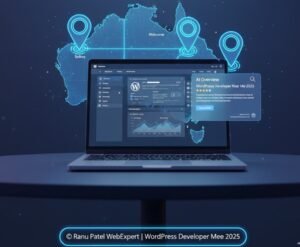A plugin is a package of files that is added to the website to extend the core functionality of a website without modifying its coding. There are so many free and paid plugins available out there but still, you can create new plugins as per your requirements. Certainly, the Woo-commerce plugin is the most popular e-commerce solution. It is the most feature-rich plugin that makes e-commerce activities flexible.
And if you are looking for a step-by-step guide to Woo-commerce plugin development then we are here to guide you with our tutorial. This step-by-step guide will help you learn how to develop the plugin and how it will help your business grow.
Read below the detailed step-by-step instructions
Woo-Commerce Plugin Development
- Define your Requirements: – This first step is the most important step where you need to define your exact requirements. When you know the exact problem that you need to solve with the plugin, you will focus on it and be able to create the plugin efficiently.
- Create a Plugin Directory Structure: – You must create an appropriate directory structure to store the plugin files that you are creating. We recommend you create a PHP file to contain the code of the Woo-commerce plugin that you are creating. You can create it using /wp-content/plugins/my-plugin/my-plugin.php and save your code files safely.
- Configure the Plugin: – By following this step, you can create a file header that contains the metadata of the new plugin. Creating the header makes it easy for the plugin to appear in the list of WordPress Plugins.
- Check Woo-commerce Status: – In the process of creating a Woo-commerce plugin, you would only be able to execute it when the Woo-commerce is active in your WordPress website. And to ensure that, you must wrap up the PHP class properly in the right code. In addition, you can use WC_Dynamic_Discounts with an empty constructor. It will work as a placeholder to complete the plugin process further.
- Register your Actions to Save a Discount: – The next step is to register actions to show and save the discounts that are associated with every user. The action show_discount will display the associated discount and save-discount will save the custom profile value with every user. Next, you can use get_user_meta() to get the details of users who have logged in. In the details of the plugin, you can check the discounts of each user however it does not allow you to change the value of other users’ discounts.
- Apply Discounts to Products: – In this step, you will need to use the Woo-commerce_Product_get_price filter to display the prices of the products. All you need is to add it to the constructor and define the function as show_dynamic_price and it will give you the discount value of the current logged in user and help calculate its dynamic price.
- Declare Required Woo-commerce Versions: -Now, you can declare the Woo-commerce version that your store requires and support using WC requires at least: 4.0 or WC tested up to: 4.1 in the plugin metadata.
- Use a Woo-Plugin Header: – Now that the process of Woo-commerce plugin development is completed and you are planning to sell it then you will need to add a Woo line (Woo: 12345: 342928dfsf8429842374wdf4234sfd) in the plugin header comment and check for the plugin updates on Woocommerce.com
The above step-by-step guide to Woo-commerce plugin development explored how to create it from scratch. It should be well-thought, developed, and tested and you can achieve it with good skills and understanding of WordPress.
As you have seen in the above guide you can create a custom plugin from scratch with your skills and in-house expertise but if you find it complicated due to lack of skills then you are suggested to not involve in the plugin development process yourself.
You must consider hiring a reliable Woo-commerce developer who can do it for you. If you are interested then our vetted experts are available to assist you with the process of building, managing, and growing processes of WordPress Powered websites.








